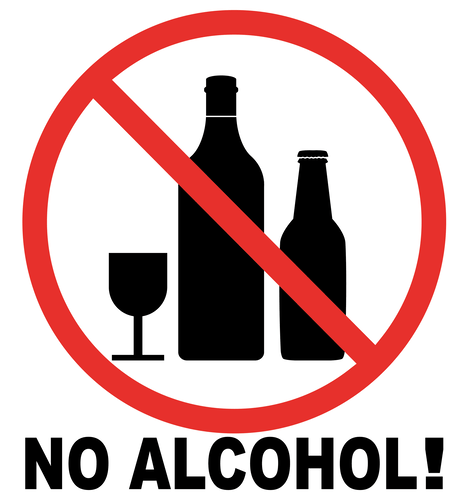Content
They may spend time coming up with numerous reasons about why they are drinking. They hope that their rationalizations will justify their behaviors to the people who love them. Losing control – This is the most common sign that someone’s drinking has moved from being only a psychological habit and is now a physical addiction.
End-Stage Alcoholism – Addiction Center
End-Stage Alcoholism.
Posted: Tue, 26 Oct 2021 07:00:00 GMT [source]
About two-thirds of chronic severe alcoholics get help for their drinking. Individuals who fall into the chronic severe alcoholic subtype are generally middle-aged men who started drinking young. This subtype has many problems with alcohol beginning at a young age, and criminal behavior is common.
Drugs & Alcohol
Peyote, a psychoactive agent, has even shown promise in treating alcoholism. Alcohol had actually replaced peyote as Native Americans’ psychoactive agent of choice in rituals when peyote was outlawed. ManualNomenclatureDefinitionDSM-IVAlcohol abuse, or Alcohol dependenceAlcohol abuse – repeated use despite recurrent adverse consequences. The WHO calls alcoholism “a term of long-standing use and variable meaning”, and use of the term was disfavored by a 1979 WHO expert committee. You need more alcohol to get drunk as you begin to feel alcohol less than you did before even though you drink the same amount.

It’s a long-time, natural occurrence in campus culture and over-indulging in alcohol is like a sport, with your peers edging you on. Nearly 50 percent have a family history of alcoholism, and co-occurring mental illness is prevalent. Approximately half suffer from clinical depression, and about 1 in 5 has been diagnosed with bipolar disorder and obsessive-compulsive disorder. Intermediate familial alcoholics are more likely to be male and have a job. Most are smokers, and 20 to 25 percent have also used cocaine and marijuana. By having a better understanding of what type of alcoholic you may be, it can be easier to recognize that you would benefit from an alcohol addiction treatment program.
Learn More About Treating Addiction
Binge drinking is drinking so much at once that your blood alcohol concentration level is 0.08% or more. For a man, this usually happens after having 5 or more drinks within a few hours. For a woman, it is after about 4 or more drinks within a few hours.
so many different types of Vodka , Jack , Gin , Tequila , wines and drink mixes 🥴 . My grandma is a real life alcoholic
— Mischief Managed 👣 (@haleemarry) April 26, 2020
This group of people may have physical problems that can be attributed to their alcohol use. They may suffer from cirrhosis of the liver, or other medical conditions.
Alcohol itself is a sedative-hypnotic and is cross-tolerant with other sedative-hypnotics such as barbiturates, benzodiazepines and nonbenzodiazepines. Dependence upon and withdrawal from sedative-hypnotics can be medically severe and, as with alcohol withdrawal, there is a risk of psychosis or seizures if not properly managed.
Why Does A Functional Alcoholic Need Treatment?
It is possible for you to embrace sobriety, no matter what type of alcoholic you are. This type of alcoholic is the most common sub-type found in alcohol rehab – approximately67%seek professional help for their AUD. It is important to remember that alcohol abuse doesn’t always remain in this stage. Alcoholism can occur with repeated alcohol abuse, and for many people, it does. There is no way of knowing how long a person may “safely” abuse alcohol. Scientists have found that people who began drinking at age 15 or younger were 5 times more likely to develop an AUD than those who started drinking at age 21 or older. In addition, the risk for females among this group is higher than for males.

Also, their level of dependence on alcohol tends to be much less than those with Type B. This may be due to the fact that they generally don’t become alcoholics until they are much older. Researcher Thomas F. Babor assigned two different types to alcoholics in the 1990s. He called them Type A and Type B. They have different levels of severity, and both types don’t apply to men and women equally. Hostile behaviors – People in this phase of alcoholism will show hostility toward other people for a number of reasons. Some may be attempting to protect their supply of liquor at home or in their immediate possession.
Functional Subtype
Studies like this one help expand the ways we can approach alcoholism to help those in need the most effectively. If no two people are alike, then no 15 million people can possibly be alike either. These new types help scientists and healthcare specialists create more appropriate prescriptions to treat this deadly disease.

Also, it’s helpful to avoid situations that involve a lot of alcohol. Repeated use of alcohol puts you or someone else in physical danger . You have a drink in the morning to get yourself going after drinking too much the night before. You are unable to perform at 5 types of alcoholics work or home when you are drinking. Let your child know what behavior you expect — and what the consequences will be if he or she doesn’t follow the rules. Talk openly with your child, spend quality time together and become actively involved in your child’s life.
The 5 Types Of Alcoholics
This is what sets alcohol abuse apart from alcoholism, or alcohol addiction. For the sake of this assessment, patients may also undergo blood tests and screening for the presence of any co-occurring mental or physical health issues. If you or someone you care about is struggling with an AUD, you will likely benefit from some form of treatment. Stereotypes of alcoholics are often found in fiction and popular culture. The “town drunk” is a stock character in Western popular culture. Stereotypes of drunkenness may be based on racism or xenophobia, as in the fictional depiction of the Irish as heavy drinkers. Studies by social psychologists Stivers and Greeley attempt to document the perceived prevalence of high alcohol consumption amongst the Irish in America.

They begin drinking around age 16 and develop alcohol dependence later, around 29 years of age. This group has the highest rates of drinking, consuming alcohol on an average of almost 248 days a year and binge drinking on 69% of them with a maximum of 15 drinks. They are also young and have the earliest age of onset of drinking and the earliest age of alcohol dependence . Young antisocial alcoholics drank an average of 201 days in the last year, binge drinking on an average of 80% of their drinking days. When they drink, their maximum number of drinks is 17, the highest of any subtype of alcoholic. Of all subtypes, the functional subtype is the least likely to have legal problems; they are the least likely to report problems due to their drinking. They have the highest education levels and incomes of all types of alcoholics.
Symptoms Of Alcohol Abuse
College life in America is often synonymous with weekend parties and alcohol. Many college students find it difficult to abstain from alcohol during social events when friends are also drinking. The college Alcohol years can be even more challenging for those who have grown dependent on alcohol. Understand that it often takes many conversations like these for your loved one to agree to consider treatment.
Yesterday proved im a true alcoholic 😂 what ever got passed to me i was drinking 😂😂 2 different types of Casamigos, 2 different crowns and some patron
— Perc angle🧍🏾♂️ (@booniebeendat) June 27, 2021
If you have a challenge with your drinking habits, you may see yourself sitting in one of the descriptions below. For each subtype of alcoholic, there is a treatment that is designed to work for your needs. Research on alcoholism has identified the five types of alcoholics. Which includes an alarming percentage of young adults that are alcoholics. Few young adult alcoholics use other drugs or have legal problems. They also have a low incidence of family history of alcoholism. On average, they drink about 143 days each year, and they typically consume five or more drinks at a time.
The researchers applied the survey’s findings to the U.S. population. They estimate that in the year before the study, nearly 8 million people in the U.S. met the standard for a diagnosis of alcohol dependence. “If the health care professional is uncomfortable with assessing alcohol problems the individual should ask for a referral to an addictions specialist for an in-depth evaluation,” he says.
The largest subtype of alcoholics, the young adult alcoholic subtype is made up of people around the age of 24 who typically have been battling alcohol addiction since the age of 20. This subtype may not drink as often as the other subtypes of alcoholics; however, when they do drink, they consume alcohol in a binge pattern.
- While two-thirds have sought alcohol rehab for their addiction, it’s important that any treatment program address their co-occurring disorders and include therapies focused on preventing alcohol relapse.
- They tended to start drinking at 15 and became alcoholics by earlier than other subtypes.
- 62 percent work full-time, and 26 percent have a college degree or higher.
- They may spend time coming up with numerous reasons about why they are drinking.
Alcoholism reduces a person’s life expectancy by around ten years and alcohol use is the third leading cause of early death in the United States. No professional medical association recommends that people who are nondrinkers should start drinking. Other physical effects include an increased risk of developing cardiovascular disease, malabsorption, alcoholic liver disease, and several cancers. Damage to the central nervous system and peripheral nervous system can occur from sustained alcohol consumption. A wide range of immunologic defects can result and there may be a generalized skeletal fragility, in addition to a recognized tendency to accidental injury, resulting a propensity to bone fractures.




